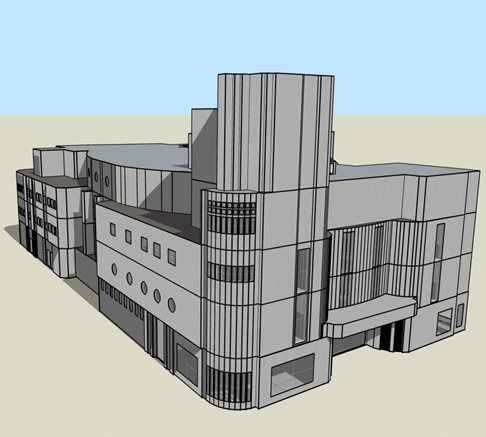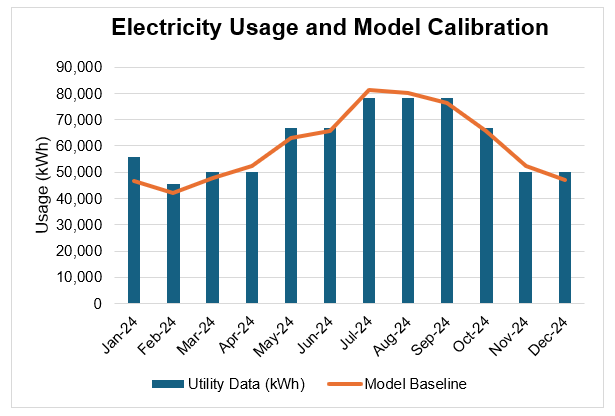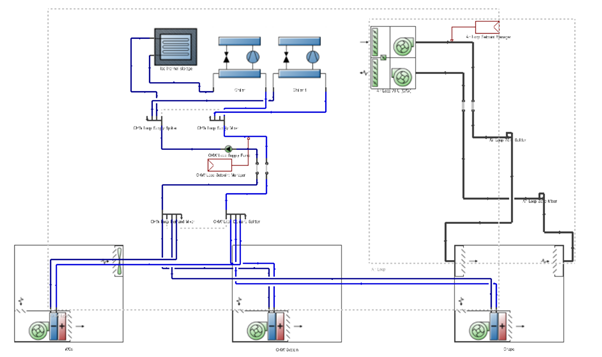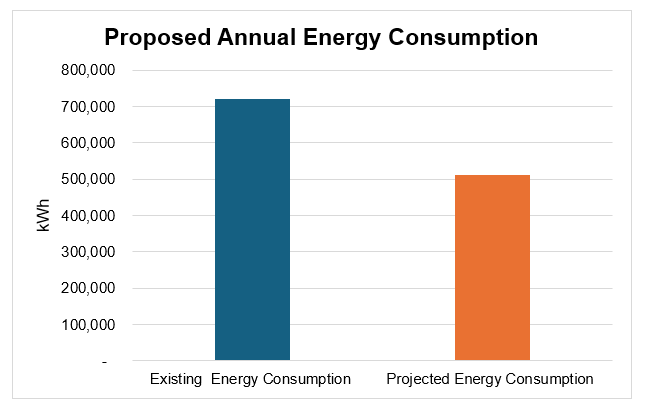Case Studies > General Simulation
Optimising Operational Energy: Commercial Building Audit
| About | An Operational Energy Audit conducted by Partner Property Consultants on a commercial building, focusing on identifying and modelling retrofit solutions to improve energy performance and reduce carbon emissions. |  |
| By | Shalani Dassanayake, Partner Property Consultants | |
| Location | EMEA | |
| Category | Operational Energy, Existing Building, Retrofit | |
| Highlights |
|
Overview
This retrofit project focused on optimising the performance of a mixed-use office building located within the EMEA region. Using a calibrated energy model, Partner Property Consultants explored various energy efficiency measures and achieved impressive results using DesignBuilder’s intuitive and comprehensive modelling platform. Leveraging the software’s user-friendly interface and powerful capabilities, the team delivered a 30% reduction in annual energy consumption and carbon savings of 117 tCO₂e.
Baseline Model Calibration
In line with good practice measurement and verification protocols like ASHRAE Guideline 14 and IPMVP initial baseline model was developed and calibrated using DesignBuilder Software. The calibrated baseline energy model aligned with actual utility data and achieved ASHRAE Guideline 14 calibration criteria. The Normalised Mean Bias Error (NMBSE) was calculated to be -3% indicating that the model slightly underperforms the actual building usage, and the Root Mean Square Error (RMSE) was calculated to be 9.75% Both values are comfortably below the thresholds stated in ASHARE Guideline 14. This high level of accuracy ensured the model reliably represented real-world building performance.

The calibrated baseline model was subsequently used to analyse the building’s energy end-use distribution, identifying key areas where energy efficiency measures could be implemented to enhance overall energy performance.
Energy Efficiency Measures
Based on the calibrated energy model and performance analysis, several targeted upgrades were identified to enhance the building’s operational efficiency. Each measure was selected for its potential to reduce energy consumption, lower carbon emissions, and improve occupant comfort - all while considering the building’s existing systems and operational schedule. The following sections detail the proposed energy-saving strategies and their impact.
Ice Thermal Energy Storage (ITES)
Existing Condition: Cooling was provided by two roof-mounted air-cooled chillers serving fan coil units. The central BMS managed chiller operation and scheduled pre-cooling from 2 a.m. to reduce peak load, with HVAC systems shutting off at 8 p.m.
Proposed Upgrade: An Ice Thermal Energy Storage (ITES) system was proposed to shift cooling loads to off-peak hours. This system freezes a storage medium overnight using off-peak electricity and discharges the stored cooling during daytime peak hours.

The system was sized to meet the peak cooling load of 400 kW, and its inside melt configuration was used for efficient heat operations. 4800 kW of ice storage capacity was used to support a 12-hour discharge cycle. This measure resulted in 45% reduction in cooling load and 16% reduction in total energy use. Further studies were carried out to assess the spatial and electrical feasibility of this system.
Automatic Lighting Controls (Daylight Sensors)
Existing Condition: Lighting is predominantly LED (60–70%) and manually controlled via wall switches.
Proposed Upgrade: Install daylight sensors with automatic stepped lighting control to adjust artificial lighting based on available daylight. This upgrade allows stepped lighting toggles for different groups of fixtures, integrated with BMS and occupancy sensors. This resulted in reduced electricity use, extended lighting lifespan and improved operational efficiency.
Low-Emissivity Spectrally Selective Double Glazing
Existing Condition: Windows were mostly single-glazed, many in poor condition, with failed seals and water ingress issues.
Proposed Upgrade: Replace with Low-E, spectrally selective double-glazed units filled with argon gas with a U-value of 1.3 W/m2K . By reflecting infrared heat and UV radiation, the upgraded windows reduce cooling loads and improve occupant comfort.
Heat Pump Water Heaters (HPWH) for Domestic Hot Water
Existing Condition: Two electric water heaters serve showers in the basement purification centre. One unit is nearing end of life.
Proposed Upgrade: Replace the existing boiler with an air-source heat pump water heater, which is 3.5 times more efficient than an electric heater. Smaller units are ideal for low building usage levels, thereby allowing for reduced maintenance and operating costs.
Conclusion
The final proposal for this building included the combination of the above energy efficiency measures, resulting in significant improvements in building performance. Incorporating the upgrades for ice thermal storage, lighting controls, low-e glazing and heat pumps for hot water, the project achieved a 30% reduction in annual energy consumption and 117 tCO₂e/year in carbon savings.
This case study demonstrates how simulation-driven decision-making can facilitate significant progress in achieving sustainable building operations.
 |
About the authorShalani Dassanayake, BEng (Hons), AMEI |
